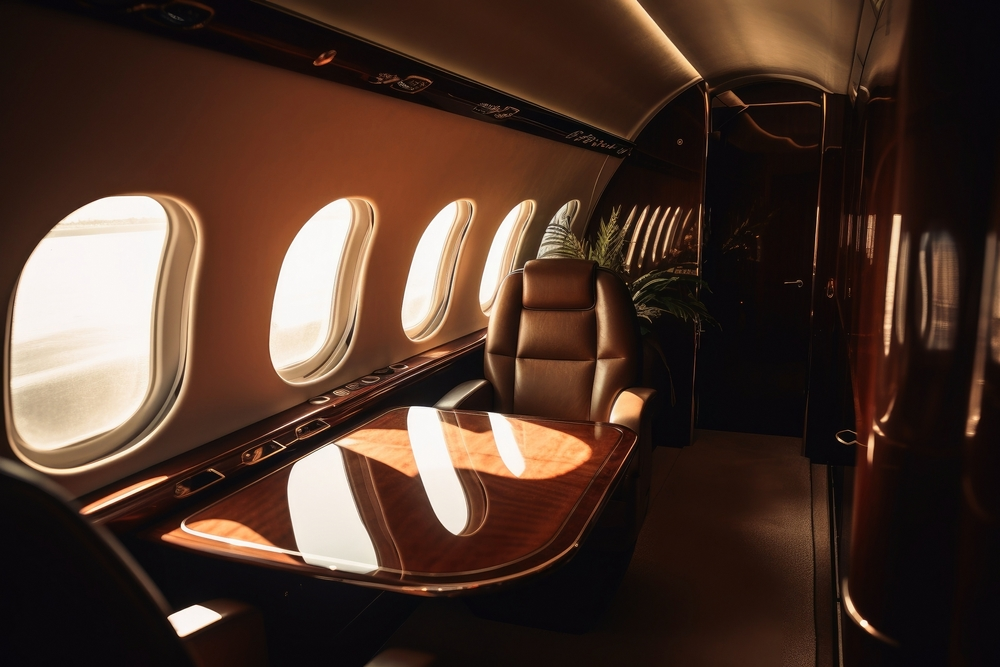Owning or operating a private jet is often seen as the pinnacle of luxury and convenience. However, the financial responsibilities that come with it are substantial. Beyond the upfront acquisition cost, operating a private jet involves a series of ongoing expenses that can add up to millions annually. From fuel and maintenance to crew salaries and airport fees, the costs vary depending on the aircraft type, usage, and routes. Additionally, exploring plane models can provide insights into cost-saving strategies and efficient operations.
In this guide, we’ll break down the different elements that contribute to the overall cost of operating a private jet, providing an in-depth understanding of what it takes to keep one in the air.
1. Acquisition Costs: The Initial Investment
The first major expense when it comes to owning a private jet is the acquisition cost. This initial investment can vary significantly depending on the type of aircraft being purchased. A light jet, ideal for short to mid-range flights, may cost around $3 million, while more luxurious, long-range jets can exceed $70 million.
New vs. Pre-Owned Jets
- New Jets: Buying a new jet provides you with the latest technology, improved efficiency, and a warranty that minimizes immediate maintenance costs. The primary benefit of a new jet is its state-of-the-art features and reliability.
- Pre-Owned Jets: Pre-owned jets are significantly cheaper to acquire upfront but may require substantial refurbishments and upgrades, adding to the overall operational costs. These upgrades could include engine overhauls or avionics system replacements.
For individuals or companies that do not require frequent usage, fractional ownership or jet card programs provide more affordable alternatives by allowing multiple users to share the jet’s cost, without the need to cover all expenses.
2. Fixed Costs: The Recurring Expenses
Once you own a jet, you will incur several fixed costs that occur regardless of how often the jet is used. These expenses are largely non-negotiable and will need to be factored into your annual budget.
1. Hangar and Parking Fees
- Hangar Costs: These costs depend on the location of the airport and the size of the hangar. For major metropolitan airports, hangar fees can range from $10,000 to $30,000 annually.
- Parking Fees: For temporary stays or layovers, parking fees are also applicable. These fees vary by location and the size of the aircraft.
2. Insurance
Private jet insurance covers hull damage and liability. The premiums depend on the jet’s value, its usage frequency, and the geographical regions it flies over. The annual cost of insurance can range from $30,000 to $500,000, with larger or more luxurious jets tending to incur higher premiums.
3. Crew Salaries
A private jet requires skilled crew members to operate it safely. The crew typically includes pilots, co-pilots, and flight attendants (especially for larger aircraft). The salaries for these professionals depend on their experience level and the type of aircraft they are operating:
- Pilot Salaries: Between $80,000 and $200,000 annually.
- Flight Attendant Salaries: Ranging from $50,000 to $90,000 per year.
The cost of crew salaries increases when you factor in benefits, training, and travel allowances.
4. Annual Inspections and Maintenance
All private jets require regular maintenance to ensure their safety and compliance with aviation regulations. Newer jets often come with warranties that reduce maintenance costs initially, but older jets may require significant upkeep. The typical costs include:
- Basic Maintenance: This can cost between $100,000 and $500,000 annually.
- Engine Overhauls: After several thousand flight hours, engines require complete overhauls, with costs ranging from $1 million to $3 million depending on the size and type of engine.
3. Variable Costs: Usage-Based Expenses

The operating costs of a private jet vary depending on how often it is used and the distances flown. These costs are primarily associated with the direct operation of the jet.
1. Fuel Costs
Fuel is one of the largest ongoing costs when it comes to operating a jet. The amount of fuel consumed depends on the size and efficiency of the aircraft. For example:
- Light Jets: Burn approximately 100 gallons of fuel per hour, which costs around $500.
- Heavy Jets: Larger jets consume up to 400 gallons of fuel per hour, with fuel costs exceeding $2,000 per hour.
Longer flights and faster cruising speeds increase fuel consumption, making this an important factor to consider when calculating total operating expenses.
2. Landing and Handling Fees
Every time a private jet lands at an airport, there are associated landing and handling fees for ground services such as refueling, towing, and parking. These costs vary by airport:
- Landing Fees: These can range from $100 to $500 at smaller airports, but can exceed $3,000 at major international airports.
- Handling Fees: Ground crew services often add another $1,000 or more per stop, depending on the location and aircraft size.
3. Catering and Amenities
Private jets are often equipped with luxurious amenities, and catering services can be an additional expense. Gourmet meals and specialty beverages often start at around $500 per flight. Other onboard services, such as satellite internet and in-flight entertainment, can add to the cost of operating the jet.
4. Depreciation and Resale Value
A jet’s value depreciates over time, often losing 5–10% annually. Newer jets hold their value better, while older aircraft experience faster depreciation, particularly if they lack modern upgrades or have high operational costs. This means that, when it comes time to sell the jet, the resale value may be significantly lower than the purchase price.
Selling a pre-owned jet typically involves broker fees, marketing costs, and refurbishments, all of which can further reduce the net resale value.
5. Shared or Fractional Ownership: A Cost-Saving Alternative
For those who want the convenience of private jet travel without the full financial responsibility, shared ownership options offer a viable solution. These include:
- Fractional Ownership: Allows users to purchase a share of a jet, paying only for a portion of the operating expenses and management fees.
- Jet Cards: Prepaid flight hours that give access to a fleet of jets, ideal for those who fly occasionally.
These options significantly reduce fixed costs such as hangar fees and crew salaries, while still providing access to private jet services.
6. How to Budget for Private Jet Operations

When budgeting for private jet operations, it’s important to understand the full scope of potential costs. For example, a midsize jet flying 300 hours per year incurs the following estimated costs:
- Fuel: $600,000
- Crew Salaries: $300,000
- Insurance: $100,000
- Maintenance: $250,000
- Hangar Fees: $20,000
- Miscellaneous (catering, amenities): $50,000
Total Annual Cost: $1.32 million. For larger jets or more frequent usage, this figure can exceed $5 million annually.
7. Innovations to Reduce Operating Costs
The private aviation industry is exploring new technologies and practices to reduce operating costs:
- Sustainable Aviation Fuel (SAF): This alternative fuel reduces environmental impact and could lower fuel costs in the future.
- Electric Aircraft: Although still in the early stages, electric aircraft designs promise lower maintenance and fuel costs.
- AI and Automation: Advanced systems for scheduling, route optimization, and crew management can improve efficiency and lower operational costs.
8. The Role of Large-Scale Aircraft Models in Cost Analysis
Large-scale aircraft models are increasingly being used to help aircraft operators and manufacturers visualize potential modifications and upgrades. These models play a key role in cost management, as they help predict aerodynamic efficiencies and identify operational improvements that could reduce long-term expenses. Additionally, they are valuable tools in planning for future refurbishments.
Conclusion
Operating a private jet offers unmatched luxury and convenience, but it also comes with significant financial responsibilities. The costs involved in private jet ownership are extensive, ranging from acquisition and fixed expenses to fuel, crew salaries, and maintenance. Understanding these costs and how they accumulate is crucial for anyone looking to invest in or operate a private jet.
While the full financial commitment may seem daunting, for frequent travelers or businesses that require constant air travel, the benefits often outweigh the costs. Alternatives such as fractional ownership and jet cards offer a way to enjoy the perks of private aviation without the full financial burden.
As the industry evolves and more sustainable solutions emerge, the cost of operating a private jet may decrease, making this luxurious mode of travel more accessible to a wider audience. Until then, a comprehensive understanding of the operating costs ensures that jet owners and operators can make informed decisions and effectively manage their expenses.





